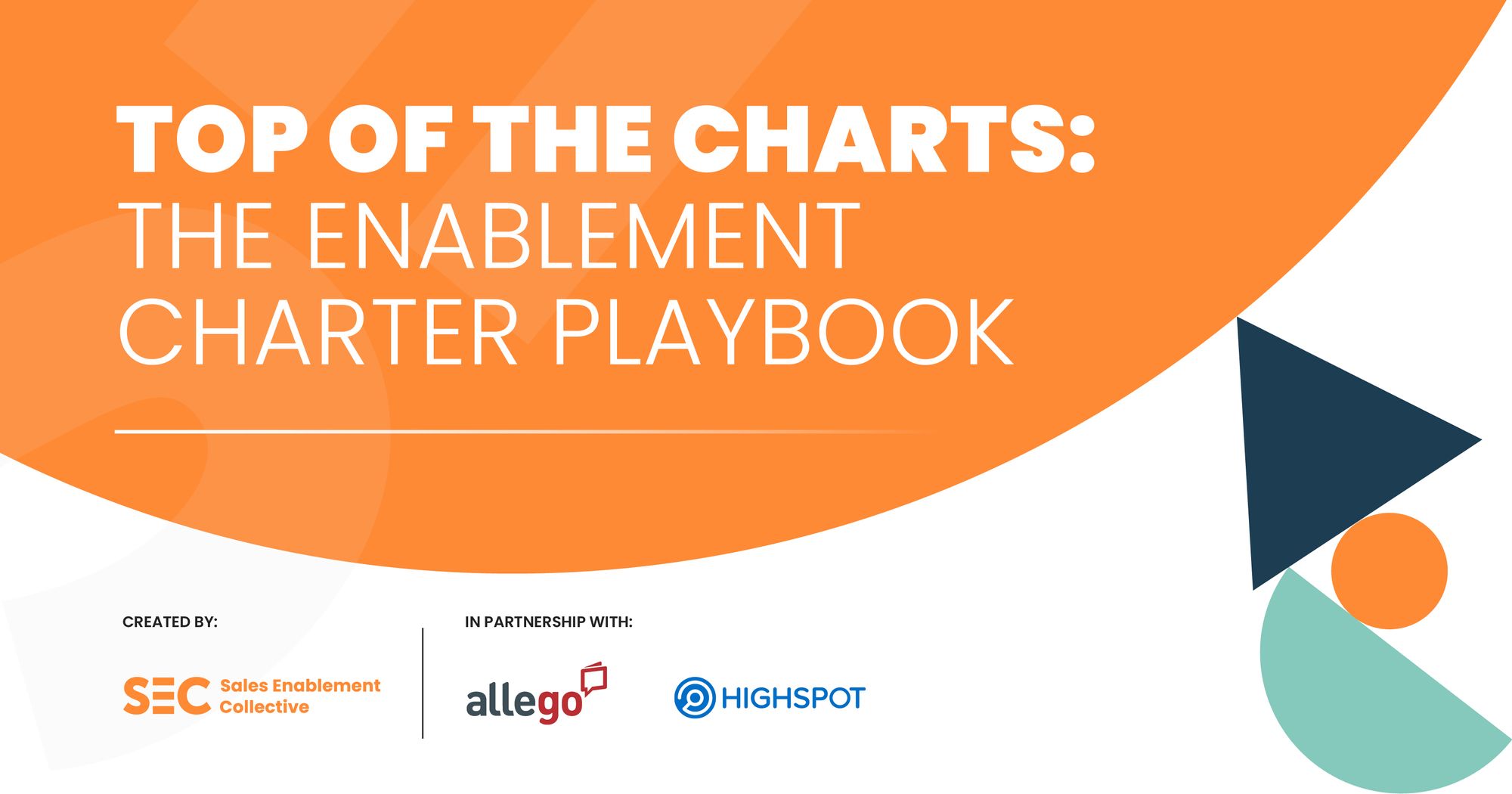This article comes from Debbi Varela’s talk, ‘The revenue enablement ecosystem - it takes a village’, at our Austin 2023 Sales Enablement Summit, check out the full talk here.
Having spent nearly two decades in sales, I can say for a fact that the enablement landscape has changed significantly since I began my journey in 2006.
Luckily, this has meant that over the years I have been able to be constantly experimenting, learning, and evolving, and through trial and error, I've discovered strategies that have led to success.
Today, I want to share some of the insights and lessons I've learned throughout my journey.
Whether you're just starting out or have years of experience under your belt, this article is packed with valuable tips and strategies to help you create a culture of enablement and build an unstoppable enablement ecosystem within your organization 💪.
But before we dive in, let me ask you a question:
Have you ever heard of the kitchen sink effect in sales enablement?
You know, that overwhelming feeling when you're bombarded with countless requests and it seems like everything but the kitchen sink has been thrown your way.
Trust me, I've been there too, and it can be quite a challenge to navigate through the chaos.
That's why it's crucial to define what sales enablement truly means to you and your team. We need to carve out our own little corner in the enablement world and build a thriving ecosystem around it, here we'll explore how to do just that.
Are you ready? Great!
Let's dive in and discover the transformative power of building an enablement ecosystem that will propel your organization to new heights ✈️.
We’ll talk about:
- Defining sales enablement
- Step 1: Knowing what you’re building
- Step 2: Organizing and activating your ecosystem
- Aligning for success
- Final thoughts

Defining sales enablement
When it comes to sales enablement, we often throw around the term without fully understanding its meaning. So, let's start by defining it.
Sales enablement is more than just a buzzword. It's a strategic approach that encompasses a wide range of activities aimed at equipping our sales teams with the necessary resources to excel in their roles.
At its core, sales enablement is about providing our salespeople with the right information, content, and tools they need to sell more effectively and efficiently.
Now, you might be thinking, "That sounds broad and all-encompassing." And you're absolutely right. Sales enablement covers a vast spectrum of responsibilities and initiatives.
Hence the "kitchen sink effect".
It's that feeling when you look at your never-ending case queue or receive seemingly endless requests from the business. You can't help but wonder, "Should we really be doing all of this?" Sound familiar?
The truth is, we need to find a way to prevent the kitchen sink effect and determine what truly matters.
To do that, we must start by clearly defining what sales enablement means to us and our team's role within the enablement landscape.
We need to carve out our own little area of enablement and build our ecosystem around it, bringing us to step 1.

Step 1: Knowing what you're building
To create a strong enablement foundation, we need to know what we're building from the very beginning. It starts with having a clear end goal in mind.
In my experience, productivity metrics have often been the focus, but remember, productivity can mean different things to different organizations.
Take the time to define what productivity means for your team and align it with the overall objectives of your organization.
Once you have a defined goal, it's time to design the enablement experience and learning path for the different roles you support. Each role within your sales organization requires specific knowledge and skills to excel.
This is where the concept of what I like to think of as “three big rocks” comes into play—product knowledge, messaging and alignment, and revenue skills/tech stack.
🧠Product knowledge
is vital for sales success. Equipping your sales team with comprehensive and up-to-date training on your offerings, value propositions, and customer pain points enables them to confidently communicate the value of your products to potential customers
💬Messaging and alignment
are crucial components of successful sales conversations. Equipping your sales team with a well-defined messaging framework, aligned with your brand, values, and target audience, empowers them to deliver consistent and persuasive messages that resonate with customers.
💸Successful selling through skills and tech
involves equipping your team with essential skills, such as negotiation and objection handling, while also ensuring proficiency in using technology tools. By investing in revenue skills and tech stack training, you empower your team to work efficiently and close deals with greater effectiveness.
As you design the enablement experience and learning path, keep in mind the unique needs and challenges of each role and tailor your training and resources.

Step 2: Organizing and activating your ecosystem
Now that we know what we're building, it's time to organize and activate our enablement ecosystem.
Throughout my years of experience, I've discovered that leveraging repeatable templates and frameworks can truly work wonders. These tools bring speed, clarity, and consistency to the enablement process, enabling us to measure and track our efforts more effectively.
One framework that has proven successful for me is a seven-step process, specifically designed for product feature releases.
This framework provides a roadmap for enablement success, let's explore each step:
Step 1: Create the enablement plan
This plan serves as a roadmap, outlining the objectives, strategies, and key activities required to empower your sales team with the necessary knowledge and tools.
Step 2: Assess existing core content
Take inventory of the resources and materials available, evaluating their relevance and effectiveness for the upcoming product feature release. This helps identify any gaps and allows you to leverage existing assets.
Step 3: Customize the core content
Tailor the core content to align with the unique aspects of the new feature, ensuring that your sales team has the most up-to-date and relevant information at their fingertips.
Customization ensures that your enablement efforts are laser-focused and directly support the sales process.
Step 4: Deliver the content to the field
Develop a strategy to deliver the customized content, whether through training sessions, virtual workshops, or interactive learning modules.
The goal is to equip your sales team with the knowledge and skills they need to effectively communicate the value of the new product feature to potential customers.
Step 5: Provide ongoing access
Create a centralized platform where your sales team can access the materials, review key information, and refresh their understanding of the product feature.
This accessibility ensures that your enablement efforts have a lasting impact on their performance.
Step 6: Coaching for success
Enablement should go beyond knowledge transfer—it should empower your team to apply their learnings in real-world scenarios.
Invest in coaching programs that allow for practice, feedback, and continuous improvement.
Step 7: Measure impact
Set clear metrics to gauge the effectiveness of the enablement program. By tracking and analyzing data, you can identify areas of success and areas for improvement.
This also enables you to refine your strategies, optimize your enablement initiatives, and drive greater results.
By following this seven-step framework, you can transform your enablement initiatives into a well-organized and results-driven ecosystem. Remember, organization and activation are key to driving the success of your enablement efforts.

Aligning for success
While frameworks are fantastic, the success of your enablement efforts relies on the collaboration and alignment of various teams. Remember, enablement is not a one-person show.
It takes a village.
Define the roles and responsibilities of each team involved in the enablement process and establish clear handoffs between them.
To prevent friction and promote effective collaboration, consider establishing core enablement working groups, bringing together reps from across teams.
By meeting regularly, you can align efforts, address challenges, and keep everyone moving in the same direction.
The golden metric
Now, let's talk about the golden metric—the measurable number that represents the data point you're aiming to impact. It's crucial for the entire enablement ecosystem to align on this metric and the overall goal.
For example, if you're focusing on product training, your golden metric might be the percentage of reps hitting their sales targets.
When everyone is aligned, working independently yet harmoniously toward the same goal, you create a powerful force. Remember, it's not just about productivity; it's about making a tangible impact on the numbers that matter most.

Final thoughts
Well, my fellow sales enablement professionals, we've reached the end of this journey together. We've explored the keys to building a culture of enablement and creating a robust enablement ecosystem within your organization.
From defining sales enablement to knowing what you're building, we've laid the foundation for success.
But remember, it doesn't stop here. Enablement is an ongoing journey of growth, learning, and adaptation. It's about continuously refining and improving our strategies, staying ahead of the curve, and embracing new technologies and methodologies.
Thank you for joining me on this journey. I hope you've gained valuable insights, practical strategies, and inspiration to take your enablement efforts to new heights!




